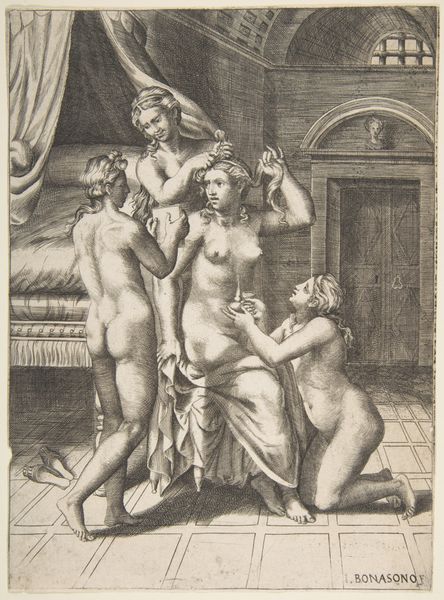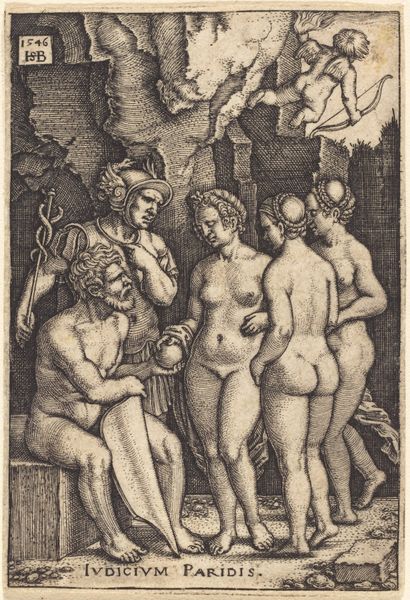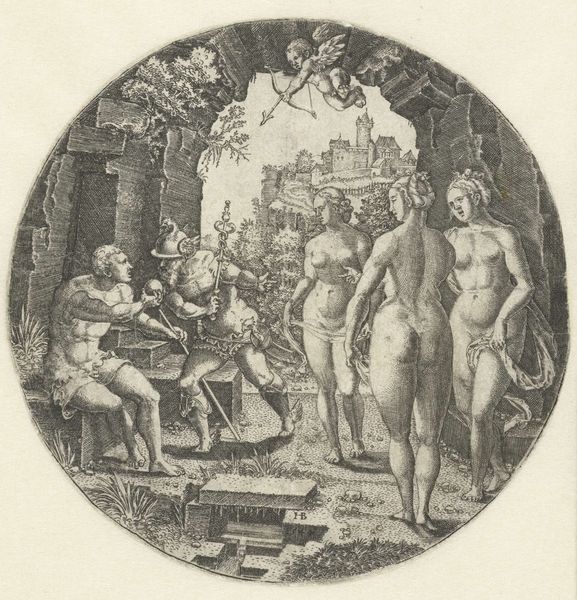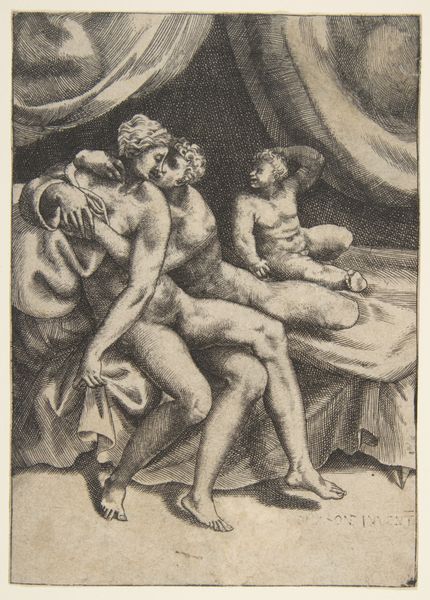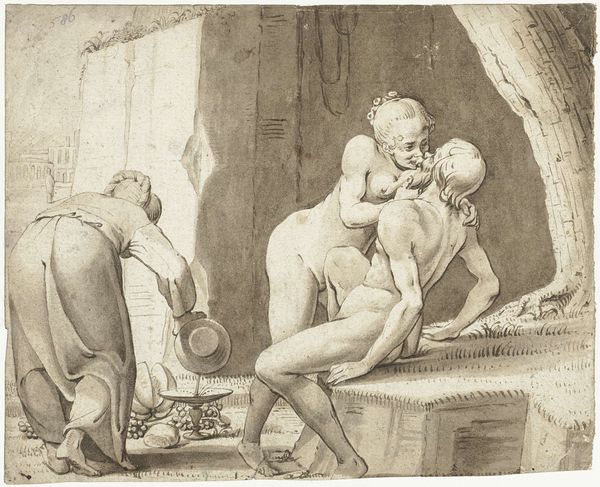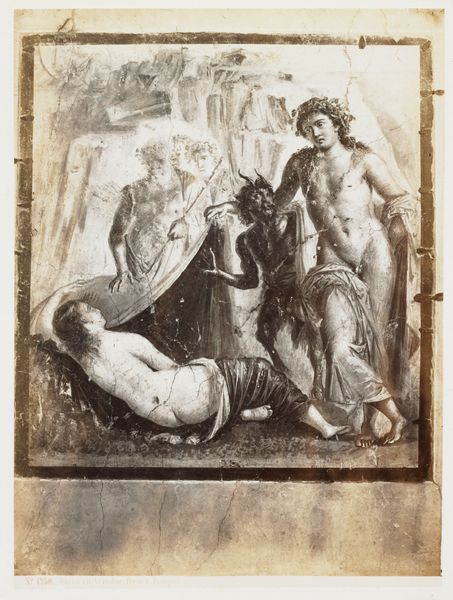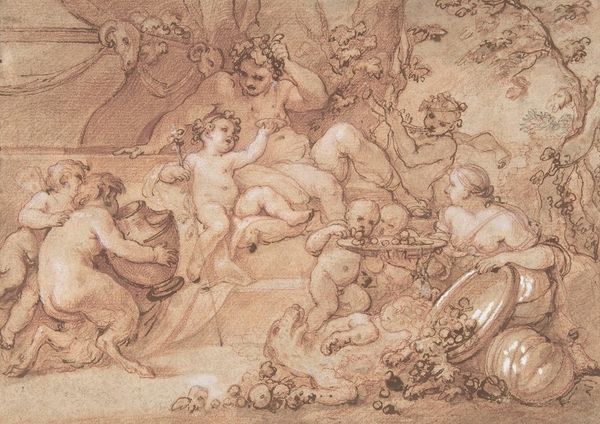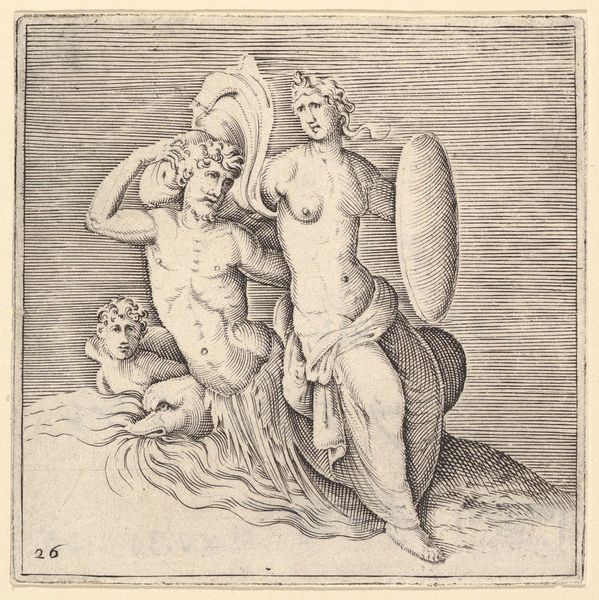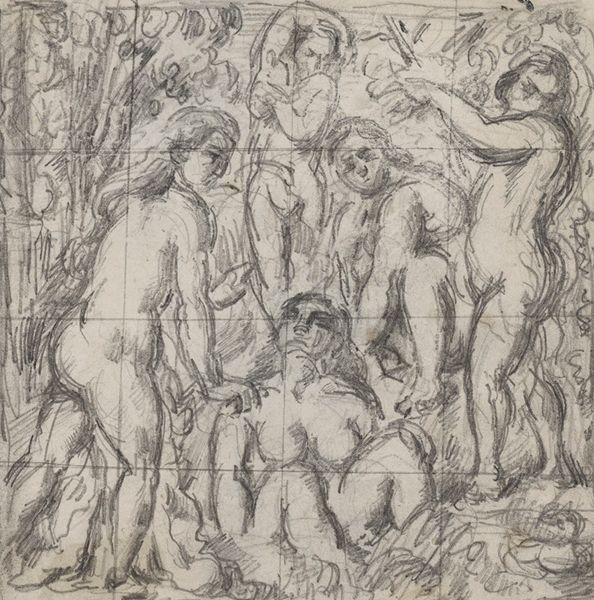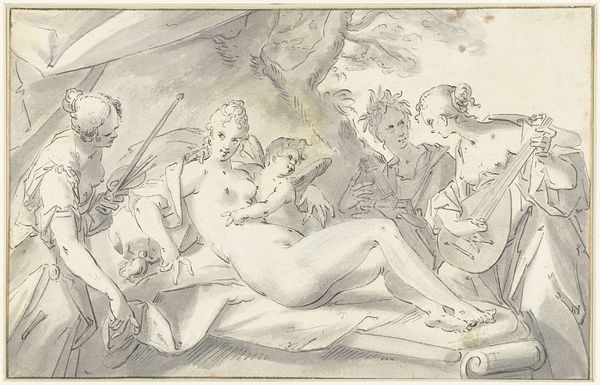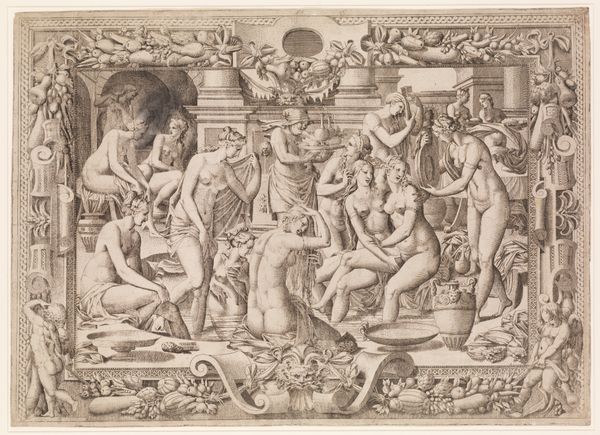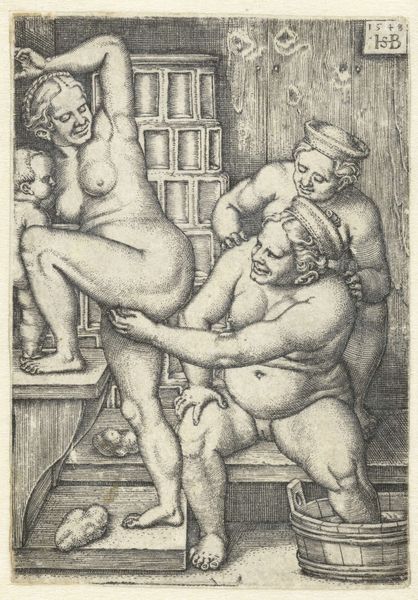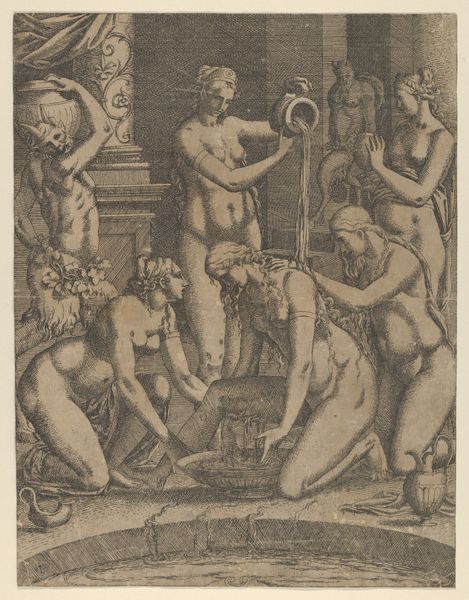
drawing, ink, pen
#
drawing
#
pencil sketch
#
charcoal drawing
#
female-nude
#
ink
#
pen
#
genre-painting
#
history-painting
#
northern-renaissance
#
nude
#
pencil art
Copyright: Public domain
Curator: Albrecht Durer created "Woman's Bath" around 1496 using pen and ink. It is a detailed scene brimming with figures. What are your first thoughts on encountering this piece? Editor: Honestly, it feels cramped! Like walking into a steamy, slightly awkward party you weren't really invited to. All those bodies… and the space itself feels so contained. The artist seems to have captured this intimate moment with incredible detail, but I wonder what is the meaning? Curator: Indeed, this work offers insight into bathing practices of the period. In Durer’s time, public bathhouses were a common social institution in Northern Europe. The arrangement of the figures and objects points beyond mere documentation. Note the variety of gestures; there's a narrative thread. Editor: I get what you mean about the narrative. Everyone’s caught in their own little world, but there's this shared space, almost a stage-like setting with those stark wooden walls behind. And that peculiar mix of ease and self-consciousness. Did this have symbolic implications beyond everyday life? Curator: Most certainly. Water, of course, has always symbolized purification. These women aren't simply cleansing physically but perhaps spiritually or socially as well. The setting adds context – communal bathing held social significance, reinforcing community bonds while offering an opportunity for seeing and being seen. This social dance of revelation and concealment resonates psychologically even today. Editor: That’s it! There's this tension between openness and privacy that makes it fascinating. It captures how community rituals can be both liberating and… exposing, right? It seems Durer masterfully combined this mundane scene with this more ethereal theme. I wonder why? Curator: Durer was deeply engaged with humanism and the revival of classical ideals of beauty alongside a precise study of the world around him. Placing the everyday in dialogue with higher ideals – perhaps he’s probing what it means to be human when naked— vulnerable, social—seen. It may have been a genre painting to show a little about German customs and society to his fellow countrymen. Editor: Seeing how these symbolic layers mix together adds so much depth! Thanks. Curator: Agreed. Observing the fusion of observation and the symbolic in the work is incredibly thought-provoking.
Comments
No comments
Be the first to comment and join the conversation on the ultimate creative platform.
